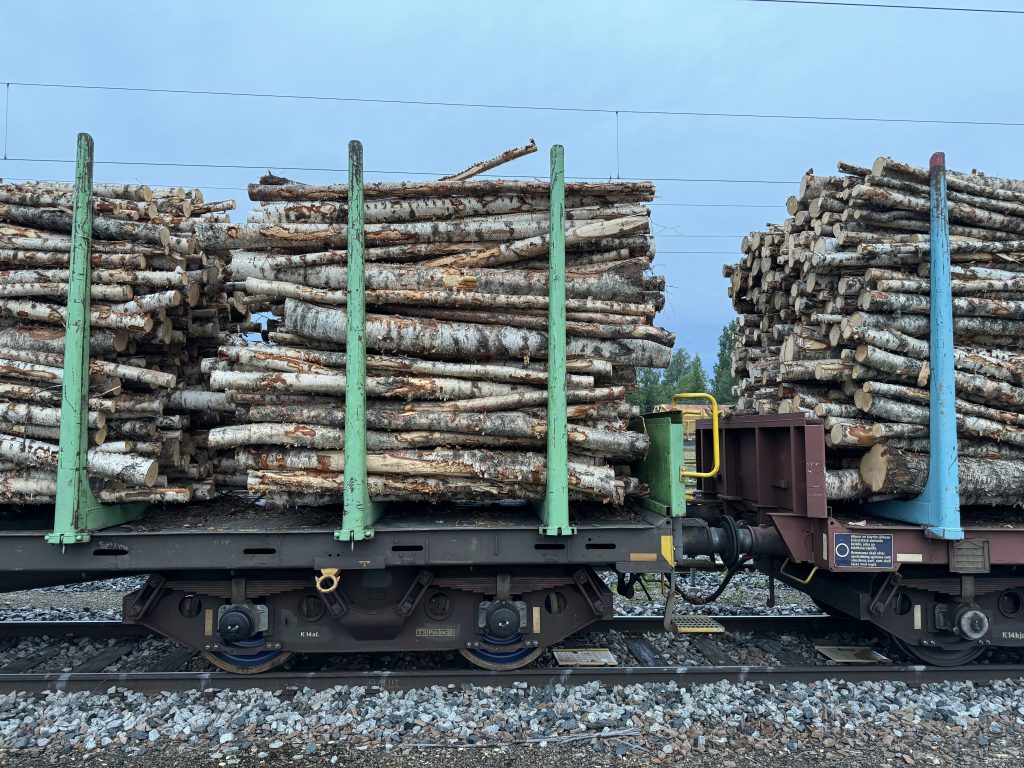Kajaani’s Loiste Corporation has decided to fully phase out biomass heat production by 2027, as the latest example of Finland’s undergoing a structural shift in how it produces heat. There was a 5 per cent national drop in forest chip consumption in 2024, continuing a multi-year decline. Long reliant on biomass from its vast forests, the country is now pivoting away from burning energy wood in favour of electrification and industrial-scale heat recovery, particularly from data centres. This transition creates risk for traditional bioenergy suppliers but opens substantial new opportunities for investors in synthetic fuel production.
The decision of Kajaani’s Loiste Corporation signals the end of energy wood as a growth industry – but not of renewable heat. A new model is emerging where electricity and AI-scale waste heat, the Finnish market replaces biomass combustion.
Biomass as Finland’s Historic Energy Backbone
Finland has long leveraged its forest wealth to fuel energy production. Particularly in the early 2000s and 2010s, forest chips became a key component of district heating and local combined heat and power (CHP) plants. In rural areas and smaller cities, such as Kajaani, biomass from thinning operations, stumps and logging residues kept homes warm through long winters.
In 2010, forest chip consumption stood at 8.5 million m³; by 2020, it had risen to over 10 million m³. At peak seasonal demand, cities like Kajaani operated at full tilt, burning up to 60 truckloads of chipped wood per day.
But Finland is no longer prioritising biomass combustion in its low-carbon transition.
Kajaani and the End of Local Combustion
Kajaani’s Loiste, the regional energy company serving the city of Kajaani, announced in June 2025 that it will end all combustion-based heat production by 2027. Its primary district heating plant will be replaced with a high-capacity electric boiler system.
“By 2027, Kainuun Voima will no longer produce heat through combustion. The company will focus solely on hydropower,” said CEO Kimmo Keinänen.
The decision will remove roughly 350,000 solid cubic metres of energy wood from the local market annually. In a region where forest energy has been a lifeline industry, the shift is disruptive.
However, it also frees up biomass for new value chains beyond burning, such as conversion into synthetic e-fuels.
Espoo and the Rise of AI-Driven Heat Recovery
In Espoo, Finland’s second-largest city, the transition is playing out differently. There, Microsoft is constructing major hyperscale data centre campuses in Hepokorpi and Järvenperä.
These centres are designed to serve both AI and cloud workloads. Compared to traditional data centres, AI server farms can consume up to 6x more electricity, producing proportionally more waste heat.
“These AI facilities aren’t just digital infrastructure – they are industrial heat producers,” notes Fortum’s District Heating Director Mikael Lemström.
Fortum, which operates Espoo’s district heating system, is investing in large-scale heat recovery systems to capture this waste heat and inject it into the city’s network. When fully online, Microsoft’s centres could provide up to 40% of Espoo’s district heating without burning a single kilogram of fuel.
This new model — where energy is first used for computation and then captured for municipal heating — aligns with EU priorities on energy efficiency and circular systems.
Market Data: A Clear Downward Trend in Energy Wood
According to Natural Resources Institute Finland (LUKE), the national use of solid wood fuels in 2024 was 22.0 million m³, down 3% from 2023. Forest chips specifically fell 5% to 10.5 million m³.
Breakdown of Forest Energy Use (2024):
- Forest chips: 10.5 million m³ (-5%)
- Largest reductions seen in: logging residues and stumps
- Regional drop-offs are especially notable in eastern and central Finland
The shift is likely permanent due to climate policy disincentivising combustion, the lack of new biomass plants under construction and the rise of electric and heat pump-based solutions.
Investor Opportunities: Where the Energy Wood Goes Next
With energy wood demand down, biomass feedstocks could be redirected to produce green e-methanol and other synthetic fuels — an area of strategic growth for aviation and shipping.
“This is an opportunity for Finland to transition into a post-combustion bioeconomy,” says LUT University professor Jero Ahola. “We still have massive biomass resources – we just need to learn how to refine them smarter.”
Not only is more feedstock becoming available, but this shift supports both environmental and economic goals. Forest owners gain a new, potentially more stable customer base beyond fluctuating heat markets. Regional service providers involved in biomass collection and transport can pivot from delivering fuel to delivering raw materials for refining.
Moreover, synthetic fuels such as e-methanol are crucial to decarbonising sectors that are otherwise hard to electrify, particularly maritime shipping and aviation, both of which face tightening EU climate targets. Finland’s logistics, engineering, and forestry infrastructure make it an ideal staging ground for scalable bio-based fuel production.
Read More:
- LUKE: Wood usage stats (in Finnish)
- Fortum: Fortum & Microsoft heat collaboration
- AFRY: Heat recovery plant info
- Reuters: Microsoft expansion & heat reuse
- Metsälehti: Kajaani luotuu metsäenergiasta (in Finnish)
- Bioenergia ry: Reports (in Finnish)
- Espoo: Using waste heat from a new data center

